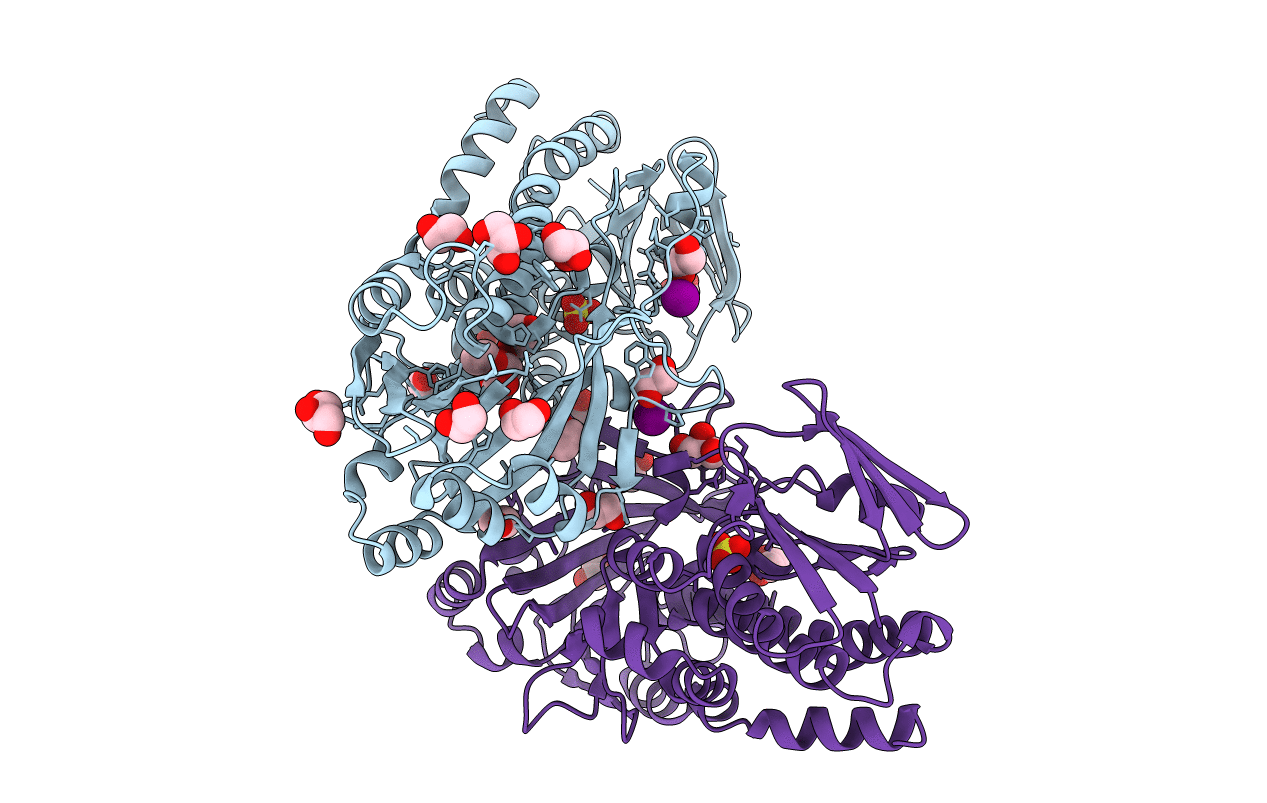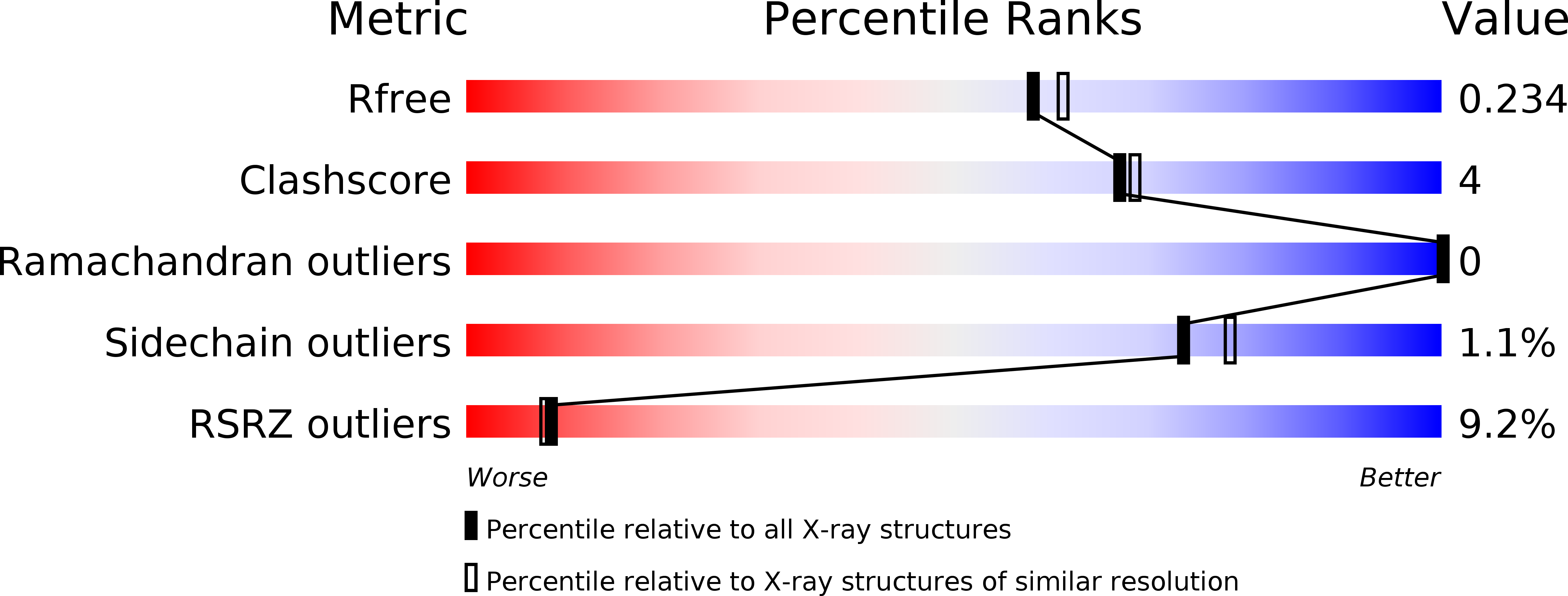
Deposition Date
2017-12-22
Release Date
2018-12-26
Last Version Date
2024-03-13
Entry Detail
PDB ID:
6BZ5
Keywords:
Title:
Structure and mechanism of salicylate hydroxylase from Pseudomonas putida G7
Biological Source:
Source Organism:
Pseudomonas putida (Taxon ID: 303)
Host Organism:
Method Details:
Experimental Method:
Resolution:
2.01 Å
R-Value Free:
0.23
R-Value Work:
0.21
R-Value Observed:
0.21
Space Group:
P 21 21 21


